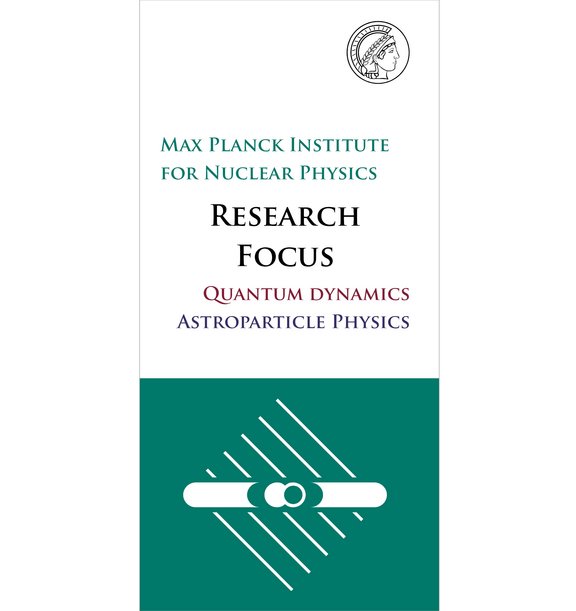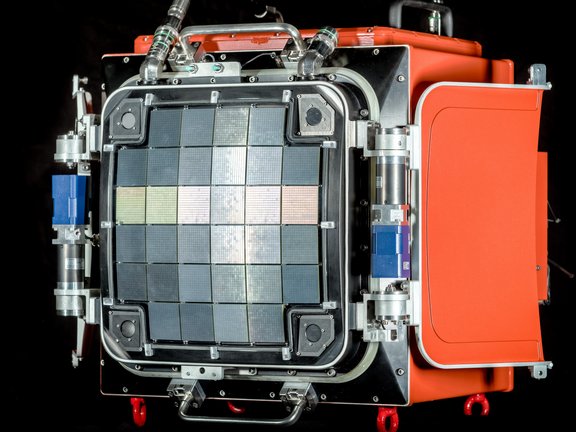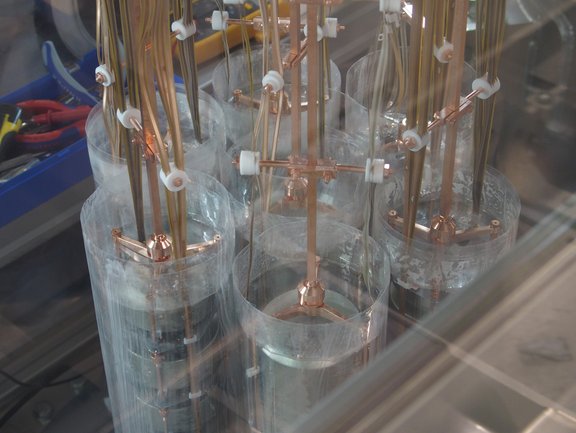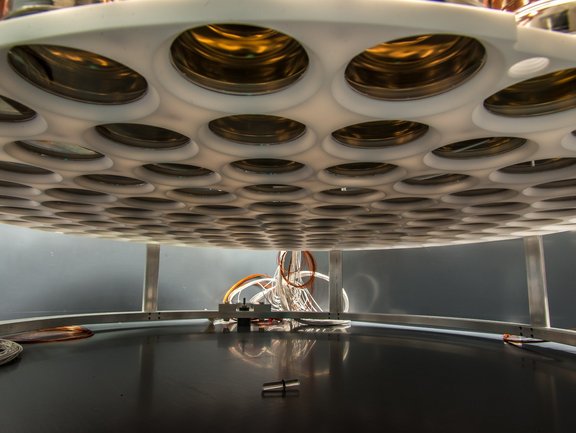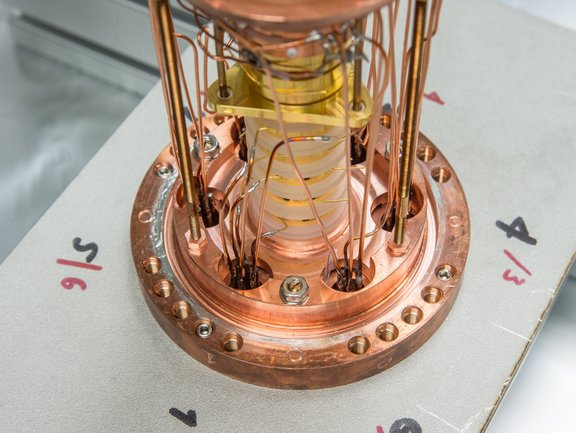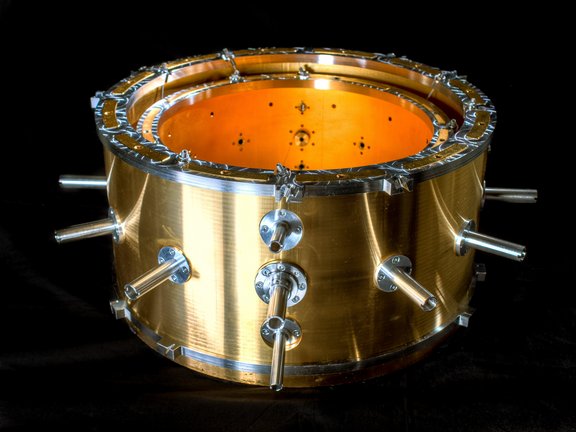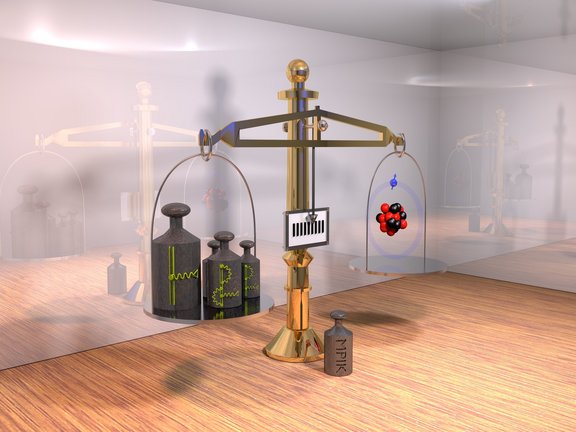Research Profile
The MPI for Nuclear Physics performs both experimental and theoretical fundamental research in two interdisciplinary research fields:
the crossroads of particle physics and astrophysics (Astroparticle physics) and
dynamics of atoms and molecues (Quantum dynamics).
Presently, there are five divisions with the directors
- Prof. Dr. Klaus Blaum (stored and cooled ions),
- Prof. Dr. Jim Hinton (non-thermal astrophysics),
- Hon.-Prof. Dr. Christoph H. Keitel (theoretical quantum dynamics ans quantum electrodynamics),
- Prof. Dr. Susanne Mertens (astroparticle physics),
- Prof. Dr. Thomas Pfeifer (quantum dynamics and control),
and additionally several independent research groups.
Astroparticle Physics
Which cosmic objects are sources of high-energy gamma rays? How do cosmic accelerators work? Why does the Universe consist of matter rather than antimatter?
Very-high-energy photons (gamma rays) from the cosmos are observed using the H.E.S.S. telescope system in Namibia and the HAWC detector in Mexico. Cosmic particle accelerators can be traced and investigated using this gamma radiation. The location of H.E.S.S. on the southern hemisphere provides a direct view of the particularly fascinating centre of the Milky Way. The observations showed for the first time, that in our Galaxy there are numerous sources of such high-energy radiation. Many sources beyond our galaxy are known as well, including active and starburst galaxies. The next generation observatory will be CTA with overall about 100 telescopes at two sites in Chile/ESO (Paranal) and Spain (La Palma).
The closely connected theoretical work deals with the operating mode of cosmic accelerators and the production of gamma rays in collisions of the accelerated elementary particles with interstellar matter.
The origin of the asymmetry between matter and antimatter is investigated with the LHCb experiment at the Large Hadron Collider of CERN in Geneva.
What is the nature of Dark Matter and how can it be found? Are neutrinos their own antiparticles? What is their mass and how do they transform from one type into another?
The theoretical work on particle and astroparticle physics is concerned with phenomenological questions about neutrino physics, the nature of Dark Matter, and their cosmological implications, e. g., immediately after the Big Bang. Combining the results from neutrino physics, astroparticle physics, and accelerator experiments provides direct and indirect evidence for some new physics beyond the Standard Model of particle physics that is very successful but needs an extension.
Together with international partners of the XENON collaboration, MPIK researchers are hunting WIMPs, the most promising candidates for Dark Matter in the Universe. Furthermore, they pursue several international large-scale experiments on fundamental topics in neutrino physics. The GERDA project searches for the neutrinoless double-beta decay – an extremely rare process if it exists at all. An observation would answer the question if neutrinos and antineutrinos are identical, which has major implications for particle physics and cosmology. The Double Chooz experiment used neutrinos from a nuclear power plant to investigate neutrino oscillations, a quantum mechanical transition between the three neutrino types at macroscopic distances. Using the same technoloy, the STEREO detector is investigating whether also a new type of neutrinos, so-called sterile neutrinos exist. The CONUS project uses reactor neutrinos to demonstrate coherent neutrino scattering which will allow in the future measurements of fundamental quantities.
Quantum Dynamics
What can we learn from the exact mass of nuclei? How are molecules formed in outer space? What are the properties of highly charged ions?
The MPIK operates facilities for the generation and storage of ions. On the one hand, this is the novel, worldwide unique, cryogenic storage ring (CSR), which is operated at a temperature of only a few degrees above absolute zero, and thus allows us to create for the first time conditions on earth that prevail in interstellar clouds, for example. Here complex molecules are observed and the researchers aim to understand how these are formed in space. On the other hand, these are a number of different ion traps like EBITs or precision Penning traps. Using these devices it is possible to determine fundamental properties of even highly charged ions very accurately. Such highly charged ions are found spectroscopically in the Universe on extremely hot places. High-precision mass measurements of single atomic nuclei, even if they decay after a short period of time, help us to understand how heavy elements have been formed in the Universe and why do we see the given abundances of elements. Last but not least these measurements are vital for the determination of fundamental constants and for the examination of the Standard Model of particle physics.
When do quantum objects behave as waves or particles? What is the role of time in the quantum world? How can chemical reactions be steered by lasers?
At MPIK, the fundamental properties of quantum systems are explored considering few particles (electrons, atoms, molecules or small clusters) interacting with each other and external fields. Whereas the motion of atoms in vibrating molecules proceeds within a few femtoseconds (a millionth of a part in a billion of a second), electrons are moving thousand times faster (attoseconds). Correspondingly short light pulses are readily available in the laser laboratories at the MPIK. For measurements with ultrashort X-ray pulses, the scientists travel, along with their experimental equipment, to free-electron laser facilities. Using multidimensional detectors such as reaction microscopes and spectrometers in combination with the pump-probe technique, it is possible to watch how molecules vibrate, rotate, and how they move during a chemical reaction.
Bombardment of atoms or molecules with photons or electrons offers an access to understanding complex quantum systems. Electron impact and ionizing radiation play important roles in the environment and in radiation biology.
Extremely short laser pulses can be used to tailor the absorption and emission properties of a medium and to control the interaction between matter and light, from wavelengths of almost a millimetre to the visible spectral range and far beyond to x-ray photon energies. Here, a fruitful interplay of theory and experiment enables us to extract the fundamental principles of quantum control of light and matter.
How does matter interact with intense laser light? What does nuclear quantum optics imply? What are the effects of very strong fields on the vacuum?
The work on theoretical quantum dynamics is focused on calculations of the interaction of atoms, ions and nuclei with highly intense laser fields. In these fields particles become so fast, that the effects of Einstein‘s theory of Special Relativity play an important role. Extremely strong laser beams can directly accelerate charged particles, such that nuclear- or astrophysical processes may occur. Nuclear quantum optics opens the door to nonclassical effects in X-ray sciences.
The apparently empty vacuum is filled with virtual particles, and extremely strong fields are able to polarize or even ionize it such that real particle-antiparticle pairs are created. In the framework of quantum electrodynamics, the “structure of the vacuum” is described. On the one hand, comparison with precision experiments permits validation of QED predictions, while on the other hand theory helps to determine natural constants like the electron mass: its current value is by a factor of 13 more accurate than the former one.
